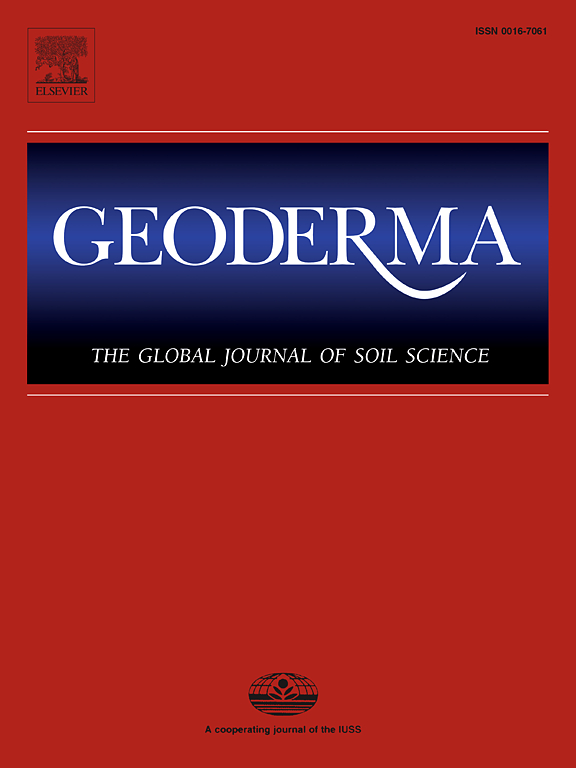Four years of climate warming facilitates an increase in fungal necromass in coastal wetland soils
IF 5.6
1区 农林科学
Q1 SOIL SCIENCE
引用次数: 0
Abstract
Microbial necromass is a vital component of soil organic carbon (SOC) stock and substantially influences soil carbon cycling. The responses of microbial necromass carbon (MNC) in coastal wetland soils to global climate warming and the factors influencing these responses, however, remain largely unclear. In the present study, a 4-year field warming experiment (+1.5 °C) was conducted with open-top chambers to reveal the response of MNC in coastal wetland soils to climate warming. The results showed differences in responses between fungal and bacterial necromass carbon (FNC and BNC) to climate warming in the soil depth of 0–50 cm. FNC content substantially increased by 17.2 % in the warmed soils as compared to that in the control soils (p < 0.05), whereas the content of BNC was not significantly different between the warmed and control soils (p > 0.05). These responses of MNC to 4-year climate warming were consistent irrespective of soil depth. The accumulation of MNC under climate warming conditions may result from a plentiful substrate availability and an alteration from nitrogen to phosphorus nutrient utilization by microorganisms, rather than changes in microbial community composition. Collectively, this study uncovers the feedback mechanism of MNC to climate warming in coastal wetlands, and emphasizes an accumulation of MNC in the blue carbon pool of coastal wetland ecosystems.
四年的气候变暖促进了沿海湿地土壤中真菌坏死团的增加
微生物坏死块是土壤有机碳储量的重要组成部分,对土壤碳循环有重要影响。海岸带湿地土壤微生物坏死团碳(MNC)对全球气候变暖的响应及其影响因素尚不清楚。本研究通过4年+1.5°C野外增温实验,揭示了滨海湿地土壤MNC对气候变暖的响应。结果表明,在0 ~ 50 cm土层,真菌坏死团碳(FNC)和细菌坏死团碳(BNC)对气候变暖的响应存在差异。与对照土壤相比,温暖土壤中FNC含量显著增加了17.2% (p <;升温土壤与对照土壤BNC含量差异不显著(p >;0.05)。这些对4年气候变暖的响应与土壤深度无关。气候变暖条件下MNC的积累可能是由于丰富的基质可利用性和微生物对氮磷养分利用的改变,而不是微生物群落组成的变化。总体而言,本研究揭示了滨海湿地跨国公司对气候变暖的反馈机制,强调了跨国公司在滨海湿地生态系统蓝色碳库中的积累。
本文章由计算机程序翻译,如有差异,请以英文原文为准。
求助全文
约1分钟内获得全文
求助全文
来源期刊

Geoderma
农林科学-土壤科学
CiteScore
11.80
自引率
6.60%
发文量
597
审稿时长
58 days
期刊介绍:
Geoderma - the global journal of soil science - welcomes authors, readers and soil research from all parts of the world, encourages worldwide soil studies, and embraces all aspects of soil science and its associated pedagogy. The journal particularly welcomes interdisciplinary work focusing on dynamic soil processes and functions across space and time.
 求助内容:
求助内容: 应助结果提醒方式:
应助结果提醒方式:


